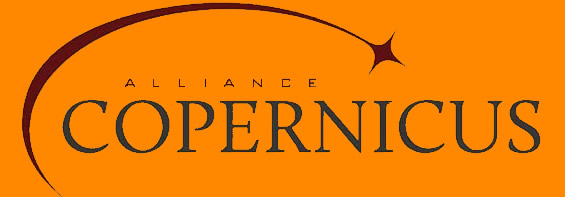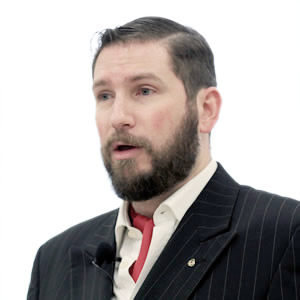#2 04/2019
Rodrigo Lozano
Specialist in organizational change for sustainability at the University of Gävle
| _ |
"At the end, we need to make sure that all the HEI system elements are addressed, and that we provide a complete picture to our students in any programme that they choose." |
Anne Zimmermann (AZ) Last February you contacted the COPERNICUS Alliance’s leadership team and asked us whether the CA could encourage its member institutions to participate in a survey on institutional mainstreaming of sustainable development in tertiary teaching. Ingrid Mulà and I both felt that this a timely and important survey; can you tell us what the survey is about and who you want to reach?
Rodrigo Lozano (RL) The survey is a follow up from two previous papers, the first one a theoretical proposition linking sustainability competences and pedagogical approaches1, whilst the second one was a survey conducted with European researchers who teach sustainability2. The new project is about finding out whether there are differences between those who teach sustainability and those who do not. We are looking for case studies that help us complete the picture for a whole institution approach. So far, we have six universities throughout the world who want to participate. The survey will be similar to the one presented in the second paper but specially designed for each participating case study. We ask those who are interested to make sure that at least 20% of teachers within their institution answer it, or 40% if the focus is only on one faculty.
AZ You have obviously developed a clear research design and I assume that the institutions you have in mind as case studies are HEIs that are already committed to a whole institution approach. In your experience, what are the main problems that such institutions face when they try to mainstream sustainable development into tertiary education?
RL Some HEIs have developed a whole institution approach, some have not (yet). We are asking the participating case studies to write a chapter for an edited book explaining their HEI and its efforts to move towards sustainability. There have been a few papers discussing barriers to the incorporation of sustainability in HEIs, e.g. Blanco-Portela et al. 2018 (also open access)3, which include issues such as: lack of knowledge, lack of support, lack of interest, lack of resources, resistance of different groups, complex bureaucracy, etc. In my experience, for HEIs that have engaged with sustainability, it is paramount that leadership is engaged.
AZ Your last sentence has already anticipated my next question! In your experience, how can the problems you mention be addressed? By the way, I totally agree with you – without engagement from the rectorate of an HEI, mainstreaming efforts are likely to remain pockets of resistance, ultimately leading to frustration. Can you provide some examples of how the six issues you just mentioned were overcome at HEIs that you know?
RL There are a number of ways to address the challenges, such as: developing an educate the educators programme; make sure that sustainability is not “pushed” but “pulled” – by “pulled” I mean that each discipline and person has their own approach and we cannot tell teachers that there is only one sustainability, but we have to ask them what are they doing to contribute to sustainability, some may contribute more on environmental issues, some on social issues. At the end, we need to make sure that all the HEI system elements (education, research, operations, outreach, assessment and reporting, institutional framework) are addressed, and that we provide a complete picture to our students in any programme that they choose. It is also very important that we showcase what the HEI is doing and focus on how to link the different elements, since sustainability is holistic (referring to the four dimensions, economic, environmental, social, and time, as well as the inter-connections between the system elements).
AZ I really like your suggestion that “pulling” works better than “pushing”; among other advantages of this approach, it’s a very pragmatic way of overcoming the problems caused by the common academic belief in a “fact-value split”. And it is driven by the principle of mutual respect. Can you be a little more concrete and show how “pulling” can work? For example: how do you convince a theoretical physicist, a specialist in medieval studies, and a lawyer that they can and should integrate sustainable development into their teaching? You could imagine two situations: either they are all in the same room or you meet them individually…?
RL By pulling, I mean, we have to ask each of them how do they contribute to issues such as welfare/developmental economics, biodiversity, social cohesion, limits to growth, responsibility, and other sustainability issues (without emphasising too much the term “sustainability”). This is the approach that I take when doing a sustainability assessment using STAUNCH(R), which is about “building up” sustainability. For me it doesn't matter whether they are in the same room or I meet them individually, each of us has something to contribute to sustainability. The key point is to “contribute” to sustainability.
AZ … indeed. And yet, the challenges of ensuring that everyone is involved in this way probably remain very substantial. In the “Vision-and-Action Workshop” that took place at the beginning of the year, participating CA members suggested three priority areas for CA activities in the next few years: 1) leadership and professional development, 2) transformative quality assurance and assessment, and 3) experienced-based support for ESD; it seems that the survey you are planning could be an important contribution to these priorities, especially to the second, and we hope that several member institutions will be willing to participate in the survey and will contact you! To conclude, is there something that your institution, the University of Gävle, could also offer the CA network as a pool of experience for the first and third priorities?
RL The survey does indeed contribute to point 2. We already have six HEIs that will participate as case studies. It would be great if other CA members would be interested too (invitation letter, the deadline is 25 May 2019). We, at the University of Gävle, have been working with sustainability for quite some years. Before I arrived, my colleague Kaisu Sammalisto led the efforts. We have done a comparison of student perceptions of environmental issues; we have had ISO14001 since 2004; and we have carried out two staff surveys to assess the incorporation and institutionalisation of sustainability at the university (we are working on the paper on this last item).
We are looking for a closer collaboration with CA, so that we can all benefit.
AZ Many thanks for your time and your answers! We certainly hope that CA members will contact you and contribute to your interesting research project. And we look forward to further input from the University of Gävle on making the whole institution approach a reality.
1 Lozano, R.; Barreiro-Gen, M.; Lozano, F.J.; Sammalisto, K. 2019. Teaching Sustainability in European Higher Education Institutions: Assessing the Connections between Competences and Pedagogical Approaches. Sustainability 11, 1602. https://www.mdpi.com/2071-1050/11/6/1602
2 Lozano, R.; Merrill, M.Y.; Sammalisto, K.; Ceulemans, K.; Lozano, F.J. 2017. Connecting Competences and Pedagogical Approaches for Sustainable Development in Higher Education: A Literature Review and Framework Proposal. Sustainability 9, 1889. https://www.mdpi.com/2071-1050/9/10/1889
3 Blanco-Portela, N.; R-Pertierra, L.; Benayas, J.; Lozano, R. 2018. Sustainability Leaders’ Perceptions on the Drivers for and the Barriers to the Integration of Sustainability in Latin American Higher Education Institutions. Sustainability 10, 2954. https://www.mdpi.com/2071-1050/10/8/2954
Contact Rodrigo Lozano: This email address is being protected from spambots. You need JavaScript enabled to view it.
Download full conversation as pdf


